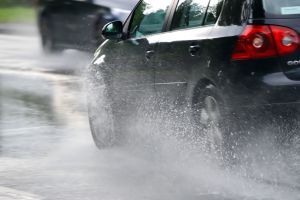Many people overlook there braking system unless they have a problem or noise when braking. It is very important to make sure that your brake fluid is at the optimal level to prevent issues in the system. Most newer vehicles have anti-lock braking systems which can be very expensive if something were to go wrong. If your vehicles brake fluid has an excessive amount of moisture this can cause premature brake failures. The suggested rule is to change the fluid out every two years or 24,000 miles, the mileage number is on the low end and you will have no problem with just changing it every two years. Over time brake fluid absorbs moisture and will eventually accumulate too much which will not only cause a chance of rusting but will also cause the temperature rating of the fluid to change which can cause a major failure under heavy braking or by continual use which is mostly noticed when driving down steep hills or when pulling heavy loads.
You will need to purchase a vacuum gauge, most stores that sell these will sell this tool as a package that will come with the proper reservoir to be able to bleed your brake system. A tool will cost around fifty dollars to do the job correctly. You will also need about 1 quart of the proper brake fluid for your vehicle. If you are not sure what type of fluid your vehicle takes you can ask your local auto parts store for assistance. Make sure you have the correct fluid, if you use the wrong type you will cause more harm then good. You should also purchase a can of brake fluid and to make sure you have a catch pan for the fluid.
Follow the directions on the vacuum gauge on how to hook it up to be able to bleed your system. If you are not clear with the directions all you need to do is take one tube from your vacuum gauge, attach the other end to the reservoir. On the other side of the reservoir put on a second tube and install the brake bleeder adapter. You will then need to take off of your brake master cylinder cap (make sure not to touch your brake pedal at this point), suck out the reservoir until it is empty. Once the reservoir is empty fill it with fresh fluid, you are now ready to flush out the lines. Many people do not empty the reservoir before flushing which makes the process not as effective as you are just flushing dirty fluid back through the lines. In many cases you can flush your lines with out pulling off your vehicles wheels, but if access is limited you will need to remove the wheels and put the vehicle on jack stands. Loosen the brake bleeder screw and put the bleeder line on the end of the bleeder screw, pump the vacuum gauge until you see clean fluid coming out. Also make sure as you are bleeding the system that you keep the master cylinder reservoir cap off and that the reservoir stays at a full level. If you let the reservoir become too low you will pull air into the system which will require you to bleed the braking system. It is best to start at the right rear wheel, proceed to the left rear, right front then finally the left front. This process is best as you are starting at the furthest line and working towards the shortest line. as you finish flushing each line make sure the bleeder screw is tightened back down. Once you have flushed each line until fresh fluid comes out you are done. You should go back through and make sure all of the bleeders are tight and use the brake clean to clean off the excess brake fluid. Top off the brake master reservoir until the fluid is at the full mark, then put the cap back on. Before starting the vehicle pump on the brake pedal several times and then hold down for a few seconds to make sure the pedal does not fade down. If it fades you have air in the system. If the pedal does not fade you should then start the vehicle and try the process again with the vehicle in park and the emergency brake set (or in neutral if you have a manual transmission). If you have no pedal fade when the vehicle is running then you are safe to drive the vehicle. If you have brake pedal fade and do not follow the above steps you could cause the vehicle to wreck, make sure you do the brake pedal fade test! If you are not sure on what to torque your wheels to you can purchase a automotive manual for around twenty dollars at most parts stores, or look on-line for your specifications. In some cases your owners manual will tell the specifications.
Doing this procedure is a good investment to your automobiles braking system. With the vacuum gauge you will also have opportunities to check other issues with your vehicle, which most gauges come with directions on how to test possible failed components. If you are looking for ways to save money by doing your own automotive maintenance check out my other write ups. If you have questions on something I have not posted yet, please let me know and I will write up something to help you save money!









